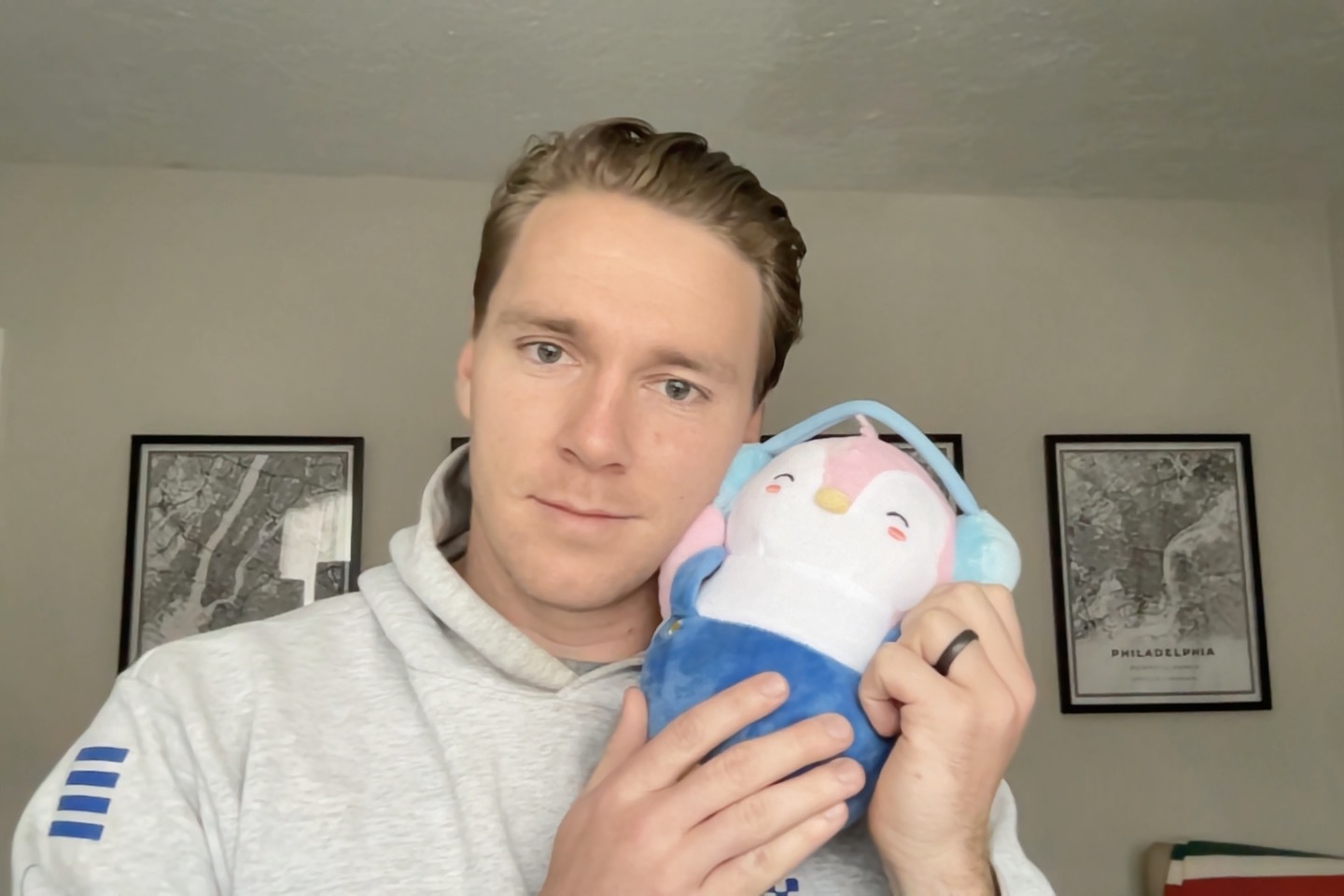Li Jin
Debate: Speculation as Growth Strategy for Social Apps
Is speculation a feature or a bug? The Variant team recently debated whether appealing to speculation is a viable strategy to build new consumer social networks.
It’s particularly timely given that this month saw the launch and rapid growth of Friend.tech. The app’s model—users buy each other’s “keys,” which are priced on a bonding curve, and get weekly airdrops of points—leans into users’ desire for financial gain (as well as access to creators’ group chats) to entice users to participate. It’s not the first consumer crypto app to leverage speculation to pique the interest of new users; Blur, BitClout, Brave, and LooksRare, among others, have all used some form of speculative interest to bootstrap users or liquidity. Not to mention, many other types of crypto networks and marketplaces have also leveraged token rewards for early adopters to overcome the cold-start problem.
Below, see our discussion, straight from our internal Slack. We welcome your input on all of these questions! Reply to us on Twitter or find us on other social platforms. And make sure you’re subscribed to the Variant newsletter, where we continue to think in public.
![]()
It’s really fascinating to me how divided crypto Twitter is over the speculative nature of Friend.tech. It feels like a rift between two separate camps.
Here’s what the data shows: The top 500 addresses comprise ~43% of total volume, suggesting a small number of power users are the ones driving Friend.tech revenue. And looking at active days of buying and trading user keys, 68% of addresses only traded a key for one day (though it’s still early and they could still come back in the future). I should note that app usage (checking the app, not just trading keys) is much stronger, which is great to see.
One potential concern is that Friend.tech is leaning too much into a model that other apps have fallen into where power users might continue to trade and accrue rewards, but the majority of users will churn from trading if they’re not profitable. The way out of that is for the app to provide additional features that users want to spend on, for reasons other than profit.
In social apps, speculation should be a feature, not the core product. The product should be the content. When speculative aspects are enshrined in social products, the speculative activity should focus on complementing the social experience. The path to monetizing social capital varies by network. Some of them tie payouts directly to social capital: YouTube and TikTok pay people directly as their subscribers, views, and streams grow in size. Other social networks like Twitter and Instagram provide users with the means of distribution and leave monetization up to the individual creator. Similarly, different speculative assets (e.g. social tokens vs. NFTs) will impact the type of content and social experiences offered by SocialFi apps.
Controlled speculation is positive for parasocial and solicitation social networks. The former because it is better at transmitting value directly to creators, lowering the barrier of entry for all creators. The latter because a free and open market is likely the best judge of the value of a person’s attention and is likely far better to elicit the desired attention vs. the current system (LinkedIn, for example).
But for dense social networks where people primarily have bilateral communication with their close or adjacent social groups, speculation sterilizes growth. Money interlaced in these types of networks inserts noise. It cheapens social connections, ultimately making them short-lived and shallow unless it is tightly regulated by social norms (e.g. dues for a club).
I like that distinction between these types of networks:
• parasocial
• solicitation (or professional)
where profit incentive creates more efficient market for establishing and routing value
vs.
• interest-based
• relationship-based
where profit incentive undermines higher-order social/experiential incentives
![]() Mason
Mason
Yeah, this framing resonates and I think also has implications for how you should add speculation or monetization to the network.
Parasocial and solicitation networks: direct speculation and monetization (e.g., monetize on access to relationships within the network and speculate on content). Interest and relationship networks: indirect speculation, monetize aesthetics (e.g. speculate on social handles).
![]() Li
Li
Speculation is a feature for bootstrapping liquidity; it’s a bug for bootstrapping new relationships or social networks (as in social networks with bidirectional relationships, to contrast against parasocial networks, as Caleb points out). When financial incentives are involved, it skews participants’ motivations and tends to overwhelm any intrinsic motivations. Applied to social networks, the participants that are attracted for speculative reasons and the relationships that form as a result of speculation are distorted from what would have been the case without that financial incentive.
That distortionary effect matters less for any network that relies on liquidity (DIMO, Helium, DeFi, NFT marketplaces, etc.), because all liquidity adds to the utility of the network. However, a new social network that’s bootstrapped via speculation risks having a foundation of non-retentive relationships, lower quality content, and transient connections.
I can also argue the opposite of what I just wrote: maybe new social networks that feature speculation are just different from social networks that have existed previously, and that’s not a bad thing, it’s just different. The relationships that are engendered by speculation aren’t intrinsic relationships like what we’d see on a traditional social network. Instead they feature financial motivation as a key facet, a la Friend.tech holders: it’s a transactional, utilitarian relationship. I buy this person’s keys because I believe in them and think it’ll do well—closely related to the concept of patronage+.
I mostly agree with Li framed it there, if you attract users based primarily on the promise of financial gain it’s very hard not to end up with transience all around: half-hearted posts, fly-by users who don’t stick around once they can cash out.
I’m a content guy, so for me, at the end of the day, what matters is the quality of the content you find on a social platform—also, obviously, is it fun to use? Financial incentive gets people in the door, but it isn’t enough to keep them hanging around if there isn’t enough to do on an app. Buying a person’s NFT or “keys” to show you like/support them isn’t itself engaging enough to hold my interest.
Jesse
Maybe a better framing is gaming vs. social networks. Speculation-driven social products may be more like games/casinos/gambling than they are like social networks.
Speculation is a bug if integrated too early in a project’s life cycle. It changes the problem startups face by shifting the dynamic from a cold-start problem to a hot-start problem, but there’s ultimately still a large problem to resolve. The hot-start problem is that speculation limits the window of time a startup has to find PMF after it takes off.
Speculation can be a feature after a project has already found some version of PMF and built something useful and fun that users naturally retain without financial motivation. In that case, speculation becomes a growth tool, offering an extrinsic incentive as a carrot to get attention from users who will stay after discovering real utility in the product.
IMO speculation is a great way to bootstrap new users in a social network, but leads to tradeoffs.
Speculation in social media is great for:
- Capturing the value created by celebrity-fan and creator-fan relationships. It disproportionately benefits users with existing clout (either on other social networks, or in the real world) over the long tail of users.
- Encouraging content creation by top earners; it forces those users to continue to post quality content to provide value to speculators.
- Free market decision-making around the value of content; the speculative action acts as a filter for what is “good” content.
- Creating clear communities of superfans, which also acts like a distribution funnel for content.
It’s not as good for:
- Sustaining meaningful bidirectional relationships
- Capturing the value created by IRL social relationships, in which one person “cares” about another person (and by extension whatever that person puts out into the world) for non-financial reasons
- Encouraging long tail of users to create content (because they’re not earning/being speculated on)
There’s definitely a balance to be struck. There’s a point where speculation becomes counterproductive in social networks: when there’s so much noise from speculators and bots that it erodes the quality of the network. Who wants to use a social app where 80%+ of the activity could be likened to wash trading? (Using an NFT marketplace analogy here.) The end user impact could be even worse in a social network, since NFT trading volume isn’t as “in your face” as a social feed.
The counterargument here is these apps aren’t really meant to be social at all, but trading protocols for social assets. This is actually an interesting outcome where we could end up with: 1) an underlying set of social trading protocols, and 2) a more social media-like front end / product layer. You arguably saw this in NFTs with apps like Context, but these assets are inherently social, making a social product layer easier to organically grow.
![]() Li
Li
What do you mean that the assets themselves are inherently social, vs NFTs?
![]() Derek
Derek
Good question, and that’s definitely a murkier point so would love feedback on my reasoning: social tokens are very explicitly linked to status, whereas NFTs, I would argue, could be approached from that lens but also as financial assets, art, cultural symbols, etc.
![]() Li
Li
I think what you’re getting at is that historically, social tokens have had little intrinsic value, whereas NFTs have some other intrinsic value (as art, as PFPs, as membership tokens, etc).
In other words, speculation on social tokens is bootstrapping an investment graph, vs. a traditional social relationship graph.
+++
This post is for general information purposes only. It does not constitute investment advice or a recommendation or solicitation to buy or sell any investment and should not be used in the evaluation of the merits of making any investment decision. It should not be relied upon for accounting, legal or tax advice or investment recommendations. You should consult your own advisers as to legal, business, tax, and other related matters concerning any investment. Certain information contained in here has been obtained from third-party sources, including from portfolio companies of funds managed by Variant. While taken from sources believed to be reliable, Variant has not independently verified such information. Variant makes no representations about the enduring accuracy of the information or its appropriateness for a given situation. This post reflects the current opinions of the authors and is not made on behalf of Variant or its Clients and does not necessarily reflect the opinions of Variant, its General Partners, its affiliates, advisors or individuals associated with Variant. The opinions reflected herein are subject to change without being updated. Variant is an investor in Context.








